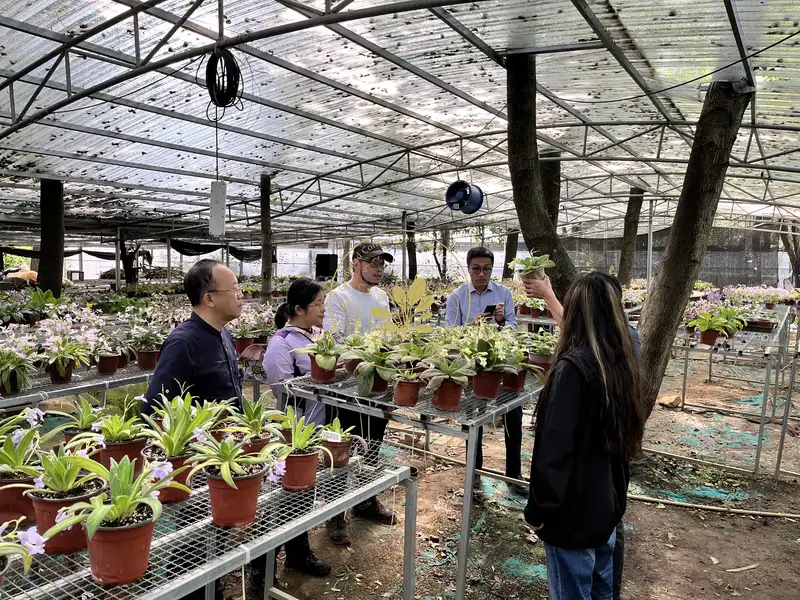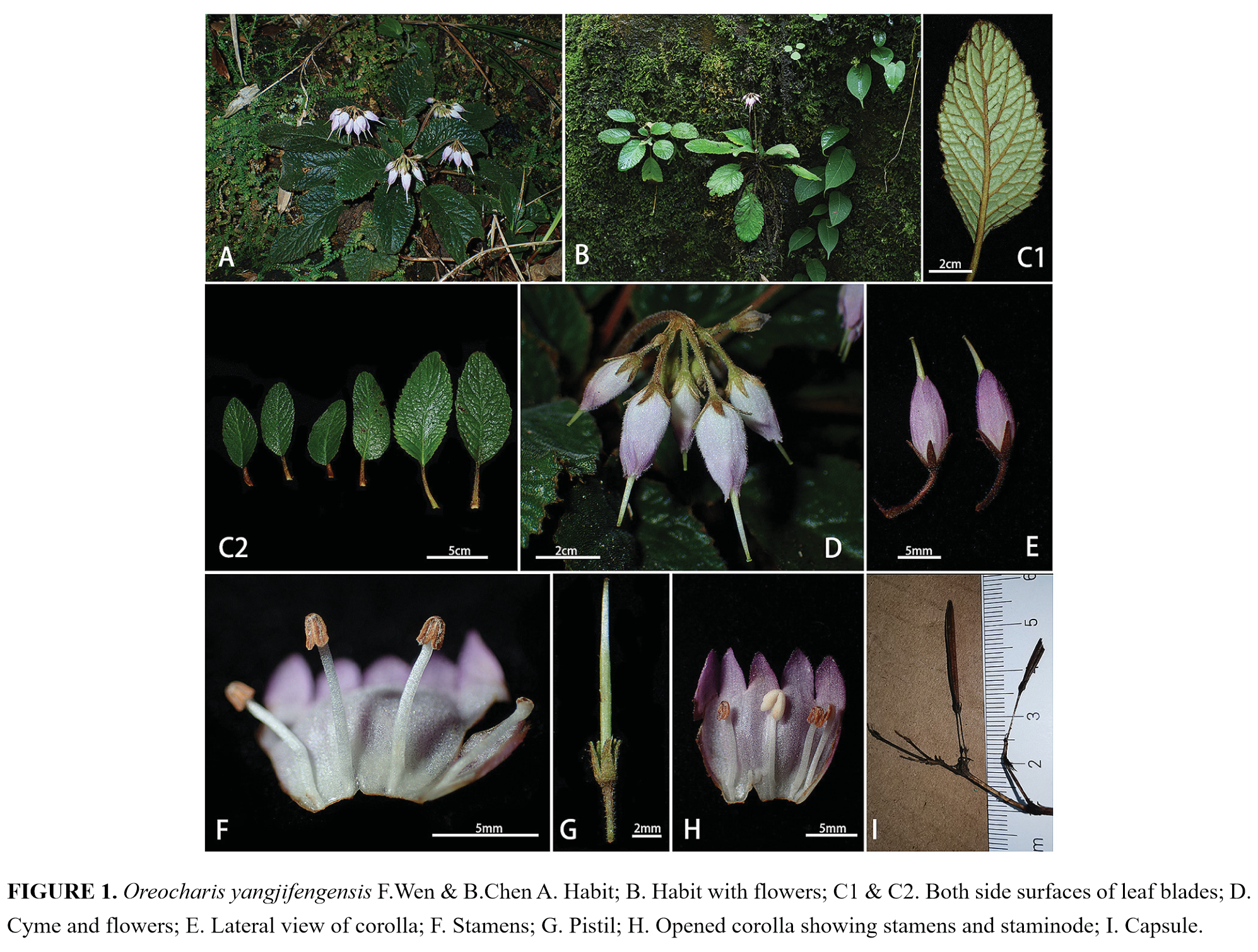GE LI, SHAOJUN LING, WEIFANG CHEN, MINGXUN REN, LIANG TANG
Effects of geographic isolation caused by Changhua River on genetic diversity of
Hainan-endemic Metapetrocosmea peltata (Gesneriaceae)
Guihaia 2019-01-30 (Published in internet/CNKI)
ABSTRACT
Metapetrocosmea peltata (Gesneriaceae) is an endemic species distributed in the middle and southern mountainous area of Hainan Island. In this study, we collected 172 M. peltata individuals from 11 natural populations, and assessed the genetic diversity and differentiation of this species based on sequence variation of intergenic transcribed spacer (ITS) region. In addition, the factors that may impact the level and distribution of genetic diversity were explored. The analysis revealed that M. peltata has a high level of genetic diversity at its species level (HT = 0.998, π = 0.0235), however, the gene flow between populations was very weak (Nm = 0.04), whereas the genetic differentiation was quite strong (GST = 0.375). Most haplotypes of M. peltata were population specific, only except for the BM and NM population, which shared a few aplotypes. Mantel test showed that the genetic distances between haplotypes were correlated with their geographic distances (correlation index r = 0.322, P = 0.010). Structure analysis clustered individuals of M. peltata into six genetic groups, whose geographic distribution is largely concordant with the isolation pattern of Hainan mountainous area caused by Changhua River. The geographic distribution of genetic clusters was further supported by population cluster analysis based on Nei’s genetic distance. This study manifests the isolation effect of Changhua River on the distribution of genetic diversity of M.peltata. AMOVA showed that 67% genetic variation was partitioned among populations, suggesting genetic differentiation of this species was mainly caused by geographic isolation. In conclusion, geographic isolation of Hainan mountainous area caused by Changhua River and its tributaries should be the driving force for the strong genetic differen tiation among M.peltata populations, and also may lead to the high genetic diversity detected at the species level of M. peltata. This study not only provides recommendation for efficient conservation and utilization of M. peltata, a potential ornamental plant species, but also facilitates the understanding of geographic distribution of genetic variation for Hainan Island endemic and other plant species.
Original article link:
http://kns.cnki.net/kcms/detail/45.1134.q.20190128.1718.006.html
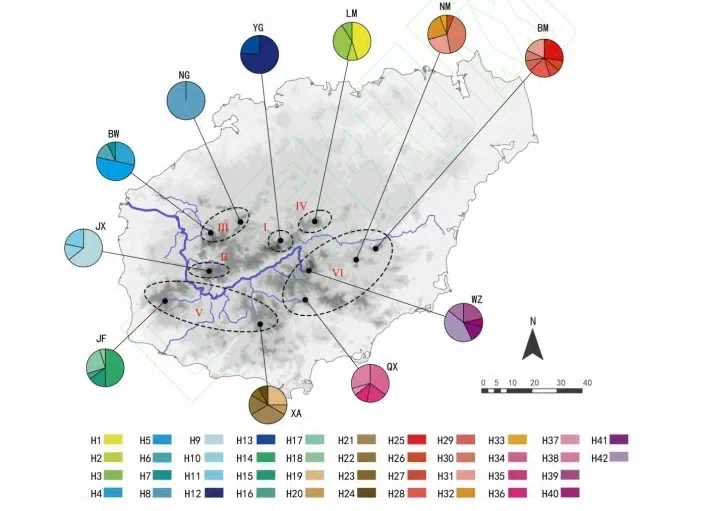
Fig.1 The constitution and geographical distribution of haplotypes of studied M. peltata populations.
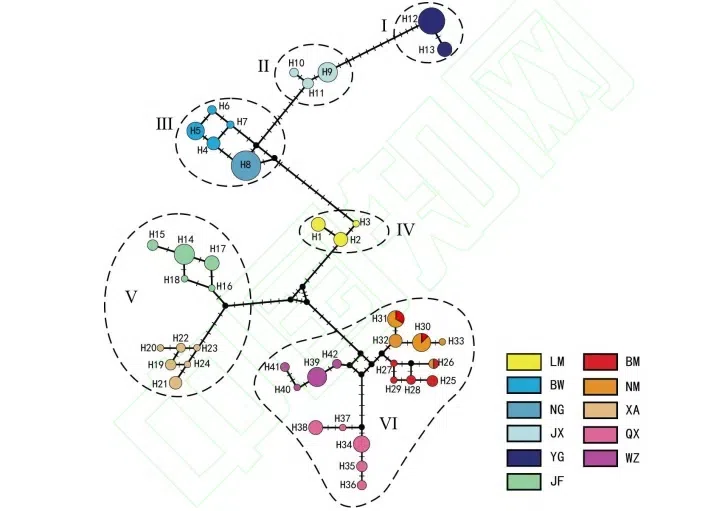
Fig.2 M. peltata haplotype network constructed based on ITS sequence variation.
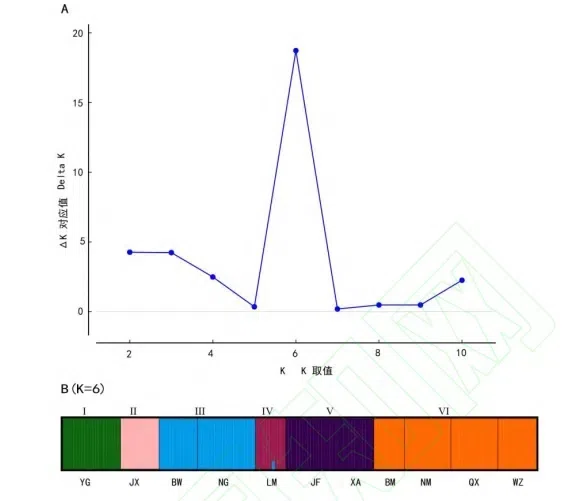
Fig. 3 (A) DeltaK plotting; (B) Distribution of cluster memberships at population level when K =6.
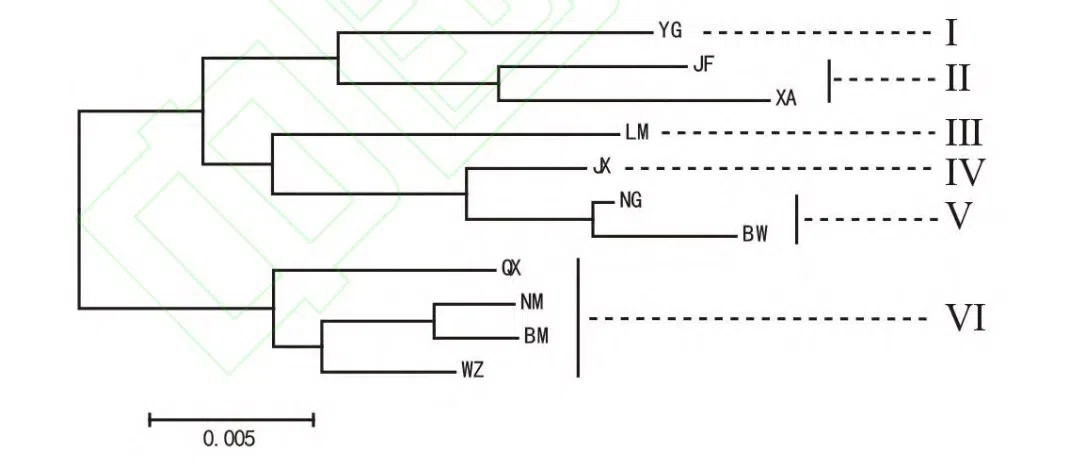
Fig. 4 Population tree based on Nei’s genetic distance to illustrate the relationship among 11 populations of M. peltata.



